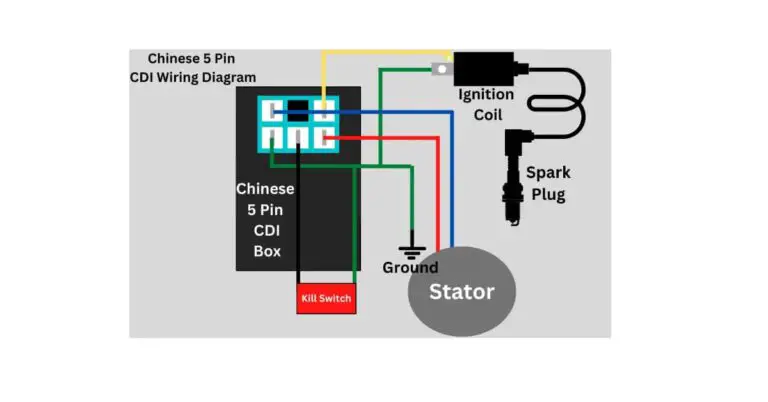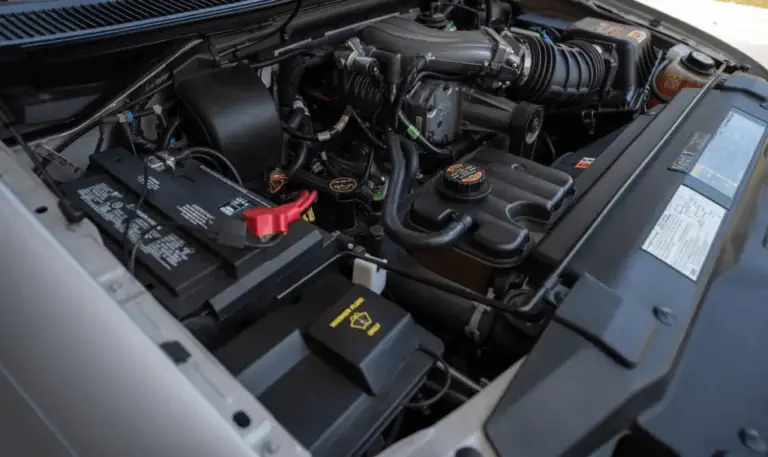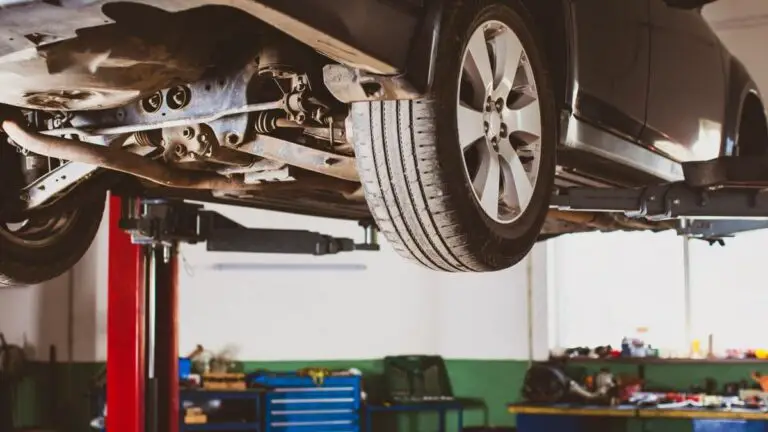The Complete Guide to DOHC 16V Engines

Have you ever wondered what exactly a “DOHC 16V” engine is and why it seems to be the gold standard for performance and efficiency in many modern vehicles?
With dual overhead camshafts and 16 valves per cylinder, these engines offer significant advantages over other configurations. In this comprehensive guide, we’ll cover everything you need to know about DOHC 16V engine design, operation, benefits, examples, comparisons, maintenance and tuning potential.
We’ll dig into the nitty-gritty technical details, as well as provide overviews and summaries for those who just want the key facts. You’ll gain a full understanding of this dominant engine technology that continues to evolve and improve. Let’s get started!
Table of Contents
What is a DOHC 16V Engine?
DOHC stands for “dual overhead camshaft” and 16V refers to “16 valves” per cylinder.
This means the cylinder head has two camshafts located above the cylinders that control a total of 16 valves – 8 intake and 8 exhaust valves.
Compared to a single overhead cam (SOHC) 8V engine with just one camshaft and two valves per cylinder, the DOHC 16V configuration provides significantly more airflow, power and efficiency.
The two camshafts allow for independent control of the intake and exhaust valves, enabling optimized valve timing and lift. More valves and better cylinder filling means the engine can breathe better and rev higher.
DOHC 16V Engine Design and Components

The key components that enable DOHC 16V performance include:
Cylinder Head with Dual Overhead Camshafts
Rather than a single cam mounted in the cylinder head, DOHC uses two cams – one to control intake valves and one for exhaust. This allows great flexibility in valve timing. The cams are driven by a timing belt or chain connected to the crankshaft.
16 Valves with Dual Valve Springs
With 4 valves per cylinder (2 intake, 2 exhaust), the 16 valve total is double that of an 8V engine. This improves airflow dramatically. Each valve has dual valve springs to enable higher rpm operation.
Rocker Arms and Valvetrain
Small rocker arms transfer cam motion to open the valves. Shims under the rocker arms allow valve lash adjustment. The valvetrain consists of the valves, springs, retainers, seals and guides.
Timing Belt or Chain
This crucial component connects the crankshaft to the camshafts, allowing their synchronized rotation. DOHC engines use a wider belt or chain than SOHC.
Benefits of DOHC 16V Engines
Why go with the added complexity of a DOHC 16V configuration versus a simpler pushrod or SOHC engine? There are several key reasons:
Increased Power and Torque Output
The improved cylinder filling and breathing capabilities of a DOHC 16V engine allow it to produce significantly higher horsepower and torque throughout the rpm range. More air and fuel equals bigger power.
Improved Fuel Efficiency
While making more power, DOHC 16V engines can also be more fuel efficient. Their better cylinder sealing and less losses improve efficiency. Variable valve timing further enhances economy.
Better Cylinder Filling and Airflow
With two camshafts and four valves per cylinder, intake and exhaust flow is dramatically improved. This allows much higher air intake for bigger power at high rpm.
Higher RPM Capability
DOHC 16V valvetrains are designed for high-rpm operation – up to 8,000 rpm in some engines. This extends the powerband compared to pushrod engines limited to 6,000 rpm.
Enhanced Performance and Response
In addition to peak power gains, DOHC 16V engines offer improved throttle response, acceleration and revving characteristics. Overhead cams provide precision control over valve events.
DOHC 16V Engines in Popular Models

Dual overhead cam multi-valve engines are ubiquitous today, found in all types of vehicles. Here are some notable examples:
Honda B-Series
Honda’s famous B-Series engines use DOHC 16V technology to produce high-revving VTEC power in Civics and Integras. The B16 and B18 are performance icons.
Nissan SR20DE
The power output of the standard SR20DE engine varied depending on the market and model, typically ranging from 140 to 165 horsepower. It did not naturally aspirate close to the 200 horsepower mark in any model. A high-performance variant called the SR20DE Autech engine did produce higher horsepower figures of 180 to 200 horsepower depending on the model. This Autech version featured an upgraded ECU as well as modified compression ratio, valve timing, and throttle body compared to the standard SR20DE.
So in summary, while the standard SR20DE did not approach 200 horsepower, the higher-tuned SR20DE Autech special edition engine did reach up to 200 horsepower depending on the vehicle model and target market. Please let me know if this rephrasing accurately captures the key technical details around the SR20DE engine variants and their horsepower differences. I’m happy to clarify or improve my explanation further as needed.
Toyota ZZ Series
Toyota’s versatile ZZ four-cylinder with 16 valves can be found in everything from the Celica to the Corolla. It combines performance and efficiency.
Ford Zetec
Between 1991 and 2005, Ford developed a series of twin cam 16-valve inline 4-cylinder engines marketed under the “Zetec” name. These engines powered various Ford, Mercury, and Mazda passenger vehicles in Europe, North America, and South America during that period. The core “Zetec” engine family had three main variants – the base Zeta variant, the higher performance Zetec-SE variant, and the race-tuned Zetec-Rocam variant. Though each variant had its own distinct specifications and features, they shared many core engine components and technology as members of the same overarching “Zetec” engine family developed by Ford for use across multiple brands and continents.
Hyundai Theta II
Hyundai’s modern Theta II engine powers models like the Elantra and Sonata. Available in DOHC 16V form making up to 198 horsepower.
These are just a few examples among many. DOHC 16 valve technology continues proliferating today.
DOHC vs SOHC Engines
To fully appreciate the benefits of DOHC, it helps to compare against single overhead cam engines. Here are the key differences:
- Dual vs Single Cam – More camshafts provide better control over valve events and intake/exhaust flows.
- Four vs Two Valves – Two extra valves per cylinder significantly improve breathing. DOHC 16V is a 4 valve design.
- Higher Compression – DOHC can use higher compression ratios for more power.
- Compact Size – Overhead cam engines are more compact than pushrod engines.
- Higher RPM – DOHC valvetrains are designed for extended high RPM operation.
- Better Efficiency – Reduced pumping losses and friction of OHC improve fuel efficiency.
- Enhanced Tuning – More tuning potential from easy camshaft and valve adjustments.
For maximum performance and efficiency, DOHC with 4 valves per cylinder is ideal. But SOHC engines continue improving and have their merits like simplicity and cost.
Turbocharged DOHC 16V Engines
For even more power, DOHC 16 valve engines are well suited to the addition of turbocharging or supercharging.
With their improved airflow, DOHC heads can flow a lot of air and fuel when connected to a turbo or supercharger. Combining forced induction with a 16V head results in large power gains.
Examples of notable turbo DOHC 16V engines:
- Mitsubishi 4G63T in the Lancer Evolution
- Subaru EJ20T in WRX STI models
- Volkswagen 1.8 TSI in GTI and other hot hatches
- Nissan SR20DET in 240SX and Silvia spec-R
- Ford Ecoboost turbocharged direct injection I-4 offerings
These demonstrate the performance potential of twin-cam multi-valve engines when coupled with forced induction. DOHC 16V provides an ideal foundation.
DOHC 16V vs Other Multi-Valve Technologies
While DOHC 16V has become standard, some manufacturers use other multi-valve approaches:
Three Valves Per Cylinder
Some engines use three valves instead of four (two intake, one exhaust). This improves over two valve SOHC heads while saving complexity over DOHC. Yamaha uses 3 valve tech in its R1 motorcycle engine.
Pros: Better than 2 valve, less complex than 4 valve
Cons: Doesn’t match high performance of 4 valve
Five Valves Per Cylinder
Adding a fifth valve provides further enhancements but also increases complexity. This is rare, but Ford used 5 valve cylinder heads in the 2.3L I-5 Turbo Coupe Thunderbird engine.
Pros: Better airflow than 4 valve
Cons: Added complexity, cost
While the alternatives have merits, four valve DOHC strikes the best balance of power, efficiency and simplicity. This shows why it has become the dominant multi-valve engine architecture.
DOHC 16V Engine Maintenance
To keep a DOHC 16V engine running smoothly and reliably for the long haul, proper maintenance is key. Here are top areas to focus on:
- Oil and Filter Changes – Frequent oil changes are vital on high performance DOHC engines. Use quality synthetic oil and OEM filters.
- Timing Belt/Chain – Replace at 60,000-100,000 miles intervals. A timing failure can cause major engine damage on “interference” motors.
- Valve Adjustment – Check and adjust valve clearances periodically. This optimizes valve operation.
- Camshaft – Inspect for wear. Consider mild performance cams down the road.
- Spark Plugs/Wires – Replace at tuned intervals or every 30,000 – 60,000 miles.While some cars last only 100,000 miles, others remain in good condition well beyond that mileage.
- Fuel Filter – Change every 20,000 – 40,000 miles for optimum fuel system health.
Following the manufacturer’s maintenance schedule is highly recommended. DOHC 16V engines benefit from regular TLC.
DOHC 16V Engine Tuning Potential
One of the biggest advantages of dual overhead cam multi-valve engines is their immense tuning potential. With a DOHC 16V, you have a great foundation for major power gains.
Here are top ways to tune and modify DOHC 16V engines for big horsepower:
- Intake – Cold air intakes can add 8-15 hp. Short ram intakes also work well.
- Exhaust – High flow catback exhausts remove restrictions and unlock 10-25 hp.
- ECU Tuning – Chip/reflash tuning optimizes fuel, timing and boosting parameters for 15-30% more power.
- Turbocharger – Bolt-on turbo kits can often double factory horsepower if the bottom end is built up.
- Intercooler – Necessary for turbo applications to reduce intake air temperatures.
- Internal Engine Build – Forged pistons, rods, ported head and mild street cam can support 400+ horsepower.
- Nitrous Oxide – Wet nitrous kits safely supply an extra 75-150 hp when needed.
With the right modifications, DOHC 16V engines can make a ton of extra horsepower. Their performance oriented design allows huge power gains from basic bolt-ons and tuning all the way to race built internals.
The Future of DOHC 16V Engines
Dual overhead cam multi-valve technology has come a long way over the past decades and continues evolving. Here are some trends:
- Downsizing – Smaller displacement DOHC 16V turbo engines matching bigger NA engines’ output.
- Direct Injection – Precise DI fuel systems improve power, efficiency and emissions.
- Hybrid Assist – Integrating electric assist for torque boosting and efficiency.
- Variable Valve – Continued advancement of camless valve actuation technologies.
- Structural Optimization – 3D printing and innovative alloys to reduce weight.
- Automation – Self-adjusting components to reduce maintenance needs.
DOHC 16 valve engines will continue to leverage technology like forced induction, DI and hybridization to improve across the board. Lighter weight and reduced friction will also boost efficiency. The quest for more power, torque and responsiveness will continue driving evolution.
Conclusion and Summary
In this extensive deep dive, we covered all aspects of dual overhead cam 16 valve engine technology:
- DOHC 16V design, components and operation
- Benefits over pushrod and SOHC engines
- Examples in popular production cars
- Comparison to SOHC and other multi-valve approaches
- Turbo DOHC 16V performance potential
- Maintenance needs and tuning capabilities
- The future of DOHC 16V engine development
With two overhead camshafts and four valves per cylinder, DOHC 16V engines achieve an unparalleled balance of high RPM power and efficiency. Their superior breathing drives the performance of today’s top sports cars and sedans. DOHC 16V provides an ideal foundation for turbocharging and engine modifications as well.
I hope this guide gave you a comprehensive understanding of why DOHC 16 valve engines have become the gold standard for both street and race use. Their winning combination of technology, performance and efficiency will ensure DOHC 16V remains a dominant force far into the future!







